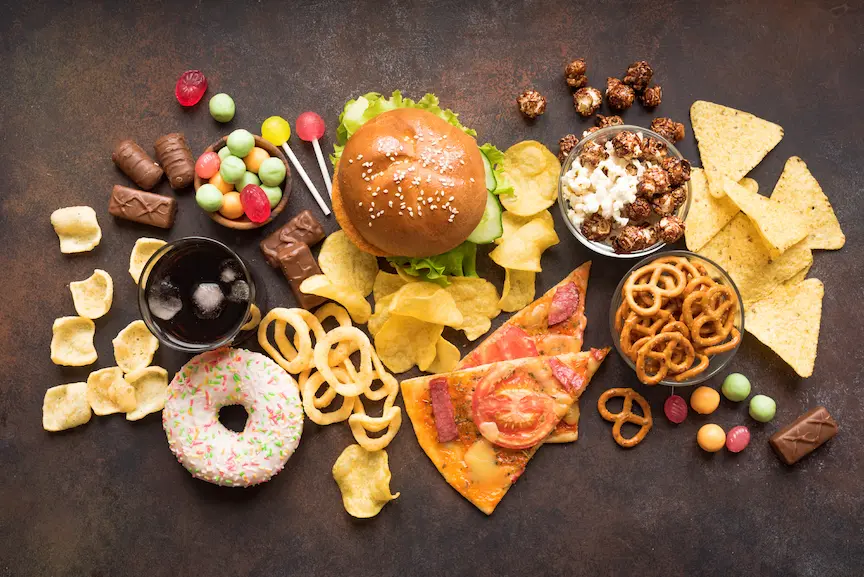Welcome to week 3 from the Lifestyle Medicine team.
The Lifestyle Medicine team is often asked how best to manage cravings as they’re often a stumbling block to successful, long term weight loss.
Cravings are usually triggered by emotions, environments, or a lack of sleep. It is important to identify what triggers your cravings so you can avoid them. If you can’t avoid the triggers then work out a plan to manage them when you know you may be at risk.
Cravings are a common reason for weight loss efforts to fail (1). This is because when you give in to your cravings, you’re at risk of overeating, or bingeing and you’ll often end up in a vicious cycle of craving more high sugar foods. Remember all carbohydrates are converted into sugar whether they are sweet or savoury, so a packet of salty crisps or a sweet cake are both technically, high sugar foods that will spike your blood sugar.

When you’re in the habit of allowing your cravings to take control, it's likely that you’ll lose control of what you eat and drink - your weight loss efforts and good intentions will be undermined by this vicious cravings cycle (1). That is unless you take control. Taking control of your cravings can help you to lose weight.
A craving can be described as an intense desire to eat a specific food - having a craving is not the same as physical hunger. It's quite common to experience cravings, which can happen even when you’re feeling full after eating a meal.
Cravings start in the mind. You'll usually crave high energy, high sugar, high fat, treat type foods that have a pleasurable texture, like chocolate, desserts, crisps or pizza. Eating these foods will often result in a sense of happiness or pleasure and as a result the need to feel this mood boost again will also lead to more cravings (2, 3).
Cravings tend to happen as a result of a stressful trigger but can also be due to a habit of overeating treat type foods and as a result of how these foods make you feel. Often, these foods will give you a surge of energy and a boost of pleasure. It's no wonder that you may find it hard to take control of your cravings when in the short term you notice that you feel good after having these foods.
When you give in to cravings and you regularly eat high sugar snacks or meals, your blood sugar will be affected. Your blood sugar will initially spike and then, soon after, it will crash down. When your blood sugar crashes down, you can find yourself feeling tired, hungry and irritable. These feelings are often accompanied by intense cravings for more high sugar, high fat treats. It's very easy for this blood sugar roller coaster to continue all day if you don't realise what’s happening and take steps to break the cycle (4).
Stress can have a big impact on what you eat too. If experiencing a lot of stress this will trigger the release of the stress hormone cortisol. High levels of cortisol can lead to insulin resistance (5) and have been found to lead to increased cravings, emotional eating and binge eating (6).
Leptin and Ghrelin

One of the main hormones that regulates your appetite is Leptin.
Leptin is made by your fat cells and when it’s released it makes you feel full. Ghrelin is another hormone, but this one has been found to increase appetite and therefore food intake and body weight (7).
Lifestyle choices have been shown to reduce levels of the appetite stimulant Ghrelin, which we know can increase during and after weight is lost. Introducing regular activity and making sure that you optimise your sleep has been found to reduce Ghrelin levels and therefore, can reduce your appetite.
When Leptin is working well it signals the appetite control centre in your brain to tell you when you’re full so that you stop eating. However, your body can lose the ability to respond to Leptin and regulate your appetite and food intake - this is known as Leptin resistance (8).
There are 3 main reasons you can become resistant to, and unable to respond to Leptin in the normal way. These are:
- 1 - too much stress (9)
- 2 - too little sleep (10)
- 3 - eating high sugar foods too often or in high quantity, triggering blood sugar imbalance
If you become resistant to Leptin it can have lots of negative effects on your body. For example, your body can lose the capacity to respond to insulin (your sugar storage hormone) which leads to insulin resistance.
If you don't change your eating habits or make lifestyle changes there is a high risk that this insulin resistance will increase and you'll eventually become diabetic (11). The good news is all of these negative effects can be reversed by following dietary and lifestyle changes.
Psychological hunger

Cravings are often triggered as an emotional response to a feeling - this can be happiness, sadness, boredom, wanting comfort, loneliness, worry, anxiety or stress. What you crave can often be very specific. Most of us experience food cravings from time to time, but if you regularly give into them this can lead to some serious health issues. Food cravings have been shown to lead to binge-eating episodes, which in turn can lead to obesity and eating disorders. In addition, giving in to food cravings can trigger feelings of guilt and shame and can affect your self esteem.
Two neurotransmitters, the ‘feel good’ brain chemicals, Serotonin and Dopamine, respond to junk food in a similar way to how they would respond to street drugs such as cocaine or heroin.
Eating sweet treats, like chocolate or jelly sweets, indulging in crunchy deep fried snacks or pizza, even toast with butter, can lead to a temporary boost in your mood as levels of Dopamine are increased.
The release of the ‘feel good’ chemical Dopamine triggers the brain’s reward pathway and overrides feelings of fullness. The mood boost that these foods trigger gradually decreases, which means if you're relying on treats to boost your mood you'll end up having to eat more and more to have the same mood boosting effect (1, 12,).
The problem with this behaviour is that it can lead to cravings, overeating and weight gain (13).
Bliss Point

Manufacturers of treat foods often create foods that have a specific ratio of fat to sugar creating something known as the ‘Bliss Point’, making these foods hard to resist and very moreish (14).
Examples of some foods with bliss points are cakes, biscuits, doughnuts and crisps. Notice where and how these kinds of foods are positioned when you're in the supermarket and you'll recognise that you're being very cleverly marketed to. Often these foods are on special offer, or are available in value packs in large quantities, or are there next to the checkout to encourage ‘impulse buys’ for you to easily add to your basket while you’re queuing. One of the most useful tips we can give you is to never go food shopping when you're hungry. Give yourself the best chance of making the best food choices to put in your shopping trolley.







